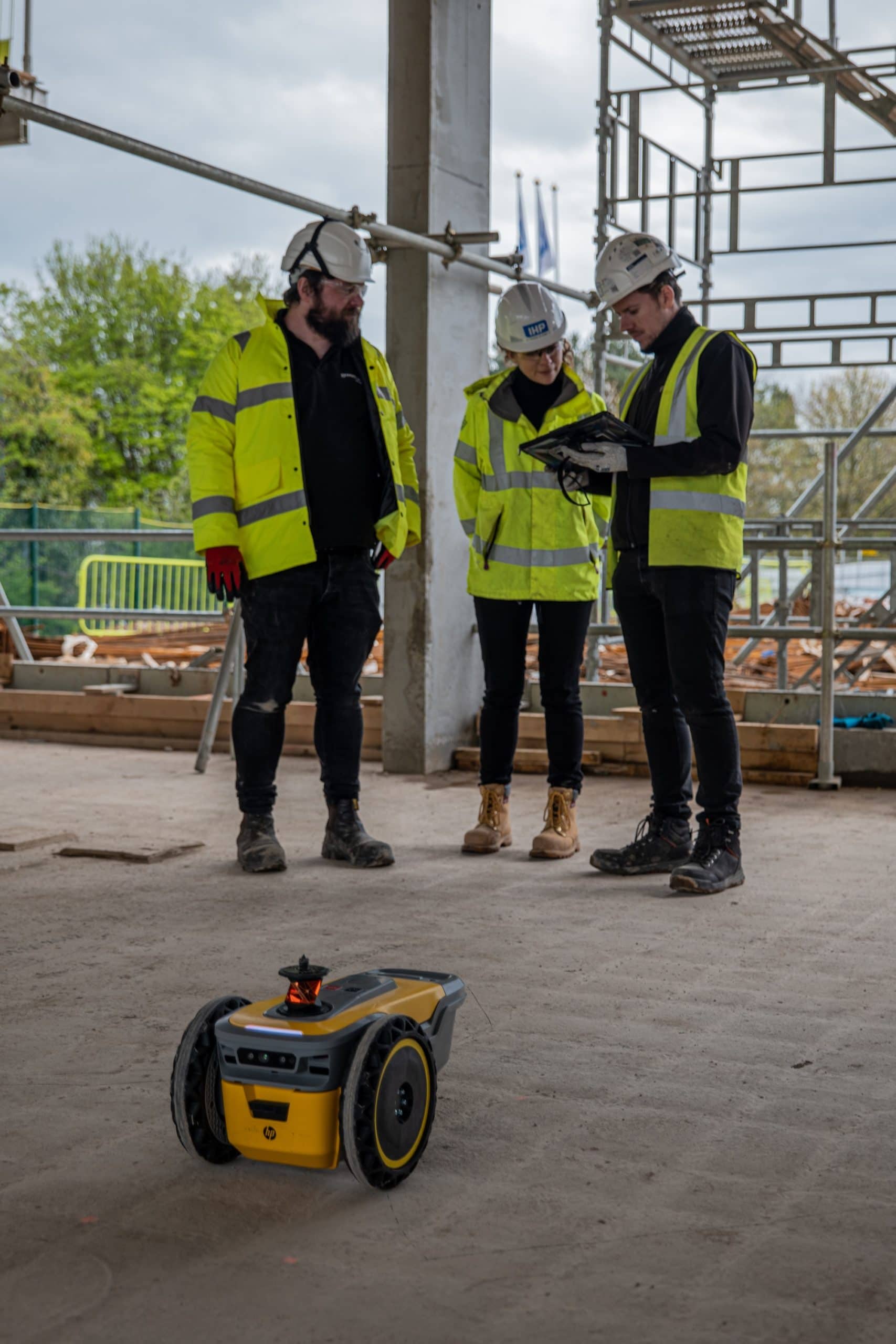But is progress happening fast enough?
By Xavi Juarez, Director, HP’s Construction Services Division

By now, most people in construction are aware of the sector’s Achilles’ heel – its chronically low levels of productivity.
While other industries have taken advantage of huge leaps in technology to become more productive (i.e. to produce more with less resources or in less time), construction hasn’t – notching a mere 1% annual increase over the last two decades, according to McKinsey. In comparison, manufacturing – a similar sector that has had its own issues with slow productivity improvement – achieved a rate of 3.6%.
Given the construction industry accounts for nearly 10% of the world’s GDP, any improvement in productivity would have positive reverberations for the whole global economy. This must be treated as a major incentive to quicken the pace of progress, which, according to recent HP survey data, remains slow.
Workers Feel The Sector is no More Productive Than it Was at the Start of Their Careers
HP’s recent State of Construction Productivity survey, which canvased the opinions of construction workers and decision-makers from the U.S., U.K., and Germany, found that 60% of respondents agreed techniques and processes have changed little in the last 20 to 30 years.
There is a clear acceptance within the industry that a problem exists, with less than 1% of workers believing the sector has no issue with productivity and two-thirds (66%) in the U.S. claiming the industry is slow in solving productivity problems.
For survey respondents to have seen little improvement in productivity across a period covering whole careers is nothing short of remarkable – especially given the advent of major pervasive technologies during this time, such as cloud computing, super-fast wi-fi and cellular connections, and smart devices, etc.
Tech Remains Under-Utilized
Despite the industry’s slow progress, there is a belief among construction workers that technology holds the key to improving productivity levels. An overwhelming 71% of respondents in our survey are confident that technological innovation can address the sector’s shortcomings.
However, although tech investment – both by constructions firms and venture capitalists in the space – has risen in the past decade, our findings suggest actual deployment of solutions was limited in the past year. For example, 75% of respondents have seen no such technology deployed on-site in the last 12 months.
Still, there were suggestions in the data that the sector is moving in the right direction. For example:
- 57% said that the pandemic had accelerated adoption of on-site and automation technology;
- 68% said their employer was open to adopting new technology to improve; and
- Half of U.S. construction CIOs estimate to be spending up to 40% of their budget on on-site technology.
The findings prompt us to ask – if the appetite for tech-driven progress is there, how can the industry quicken investment and apply it to the areas that are most in need of improvement?
After all, the industry is comprised of a dizzying and complex web of organizations – from multi-national firms to niche contractors and sub-contractors – all specializing in different areas with their own particular array of needs. Knowing where to start is a challenge in itself.

Unproductive Layouts a Costly Liability
One example of a specific area of construction ripe for tech-driven disruption is the layout (or ‘setting out’) process – with 90% of U.S. CIOs surveyed admitting construction layout techniques should have evolved more than they have in the last 20 years.
On average, HP’s report suggests construction employees experience delays of over 15 days due to layout errors, with some enduring interruptions lasting up to three months. The financial implications are significant, with rework costs amounting to 9.4% of total project budgets and nearly a fifth of the project’s profit margin.
Challenges in staffing layout tasks compound the problem, with 88% of respondents facing difficulties due to skill shortages and labor scarcity. The manual nature of layout techniques also raises concerns about potential injuries, as highlighted by over two-thirds of respondents.

Automate to Innovate
This year, HP’s Construction Services organization introduced HP SitePrint (shown above) across north America, the UK, Ireland, and Germany – an autonomous robotic solution designed to bring layout into the modern era by printing complex construction site layouts with pinpoint accuracy, empowering construction pros with as much as 10 times the productivity of manual techniques.
It represents an example of how readily available technology can very quickly be harnessed and deployed on-site to radically improve productivity levels of key construction disciplines – reducing errors, improving margins, and overcoming skills and labor shortages.
These benefits were realized by multi-national giant Skanska’s in its re-development of Penn Station in New York. Elsewhere, California-based contractor, L5 Drywall Inc, has been automating its layout processes across multiple projects, with L5 COO, Gerado Rivera, noting how HP SitePrint “laid out seven or eight rooms in the time it took the manual team to do two or three!”
Time to Get Serious About Tech
The construction industry is at a bit of a crossroads. As shown by HP’s State of Construction Productivity survey findings, there is a broad acceptance of the sector’s ongoing issue with productivity – and an appetite to fix it – with technology widely seen as the key. However, progress remains slow, considering many of the solutions required to make gains already exist.
The rewards on offer are clear, with survey respondents believing raising productivity levels can help the industry overcome various key issues, including reducing housing shortages (64%), alleviating project delays (67%), and attracting the next generation of talent (66%).
To remain competitive and foster sustainable growth, construction leaders must prioritize the integration of technology into their operations in 2024 and beyond.

Xavi Juarez is the Director of HP’s Construction Services division. Based in Barcelona, he has overseen the development and introduction of HP’s SitePrint robotic layout solution in multiple markets around the world. Xavi has been in the HP Large Format business for over 22 years, including the roles of Director of Product Strategy for HP’s DesignJet and PageWide XL portfolios, as well as the worldwide marketing lead for HP PageWide XL printers.
